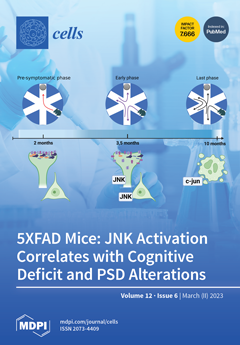Lactobacillus reuteri is a probiotic with bacteriostatic effects, which can effectively inhibit the activity of pathogens. However, the molecular mechanism underlying the inhibition of pathogens by
L. reuteri in intestinal cells remains unclear. Using the porcine intestinal cell line IPEC-J2 as a model,
[...] Read more.
Lactobacillus reuteri is a probiotic with bacteriostatic effects, which can effectively inhibit the activity of pathogens. However, the molecular mechanism underlying the inhibition of pathogens by
L. reuteri in intestinal cells remains unclear. Using the porcine intestinal cell line IPEC-J2 as a model, we combined RNA-seq and ATAC-seq methods to delineate the porcine genome-wide changes in biological processes and chromatin accessibility in IPEC-J2 cells stimulated by
Salmonella enterica BNCC186354, as well as
L. reuteri ATCC 53608. Overall, we found that many porcine transcripts were altered after
S. enterica BNCC186354 treatment, while
L. reuteri ATCC 53608 treatment partially restored this alteration, such as
salmonella infection and PI3K/AKT and MAPK pathways. Combined analysis of these two datasets revealed that 26 genes with similar trends overlapped between gene expression and chromatin accessibility. In addition, we identified potential host functional transcription factors (TFs), such as GATA1, TAL1, TBP, RUNX1, Gmeb1, Gfi1b, RARA, and RXRG, in IPEC-J2 cells that might play a critical role and are targeted by
L. reuteri ATCC 53608. Moreover, we verified that PI3K/AKT, MAPK, and apoptosis pathways are potentially regulated by
S. enterica BNCC186354 but restored by
L. reuteri ATCC 53608. The PI3K/AKT pathway was activated by
L. reuteri ATCC 53608, thereby potentially inhibiting
S. enterica BNCC186354 infection. In conclusion, our data provide new insights into the expression pattern of functional genes and the epigenetic alterations in IPEC-J2 cells underlying the bacteriostatic action of
L. reuteri ATCC 53608.
Full article






